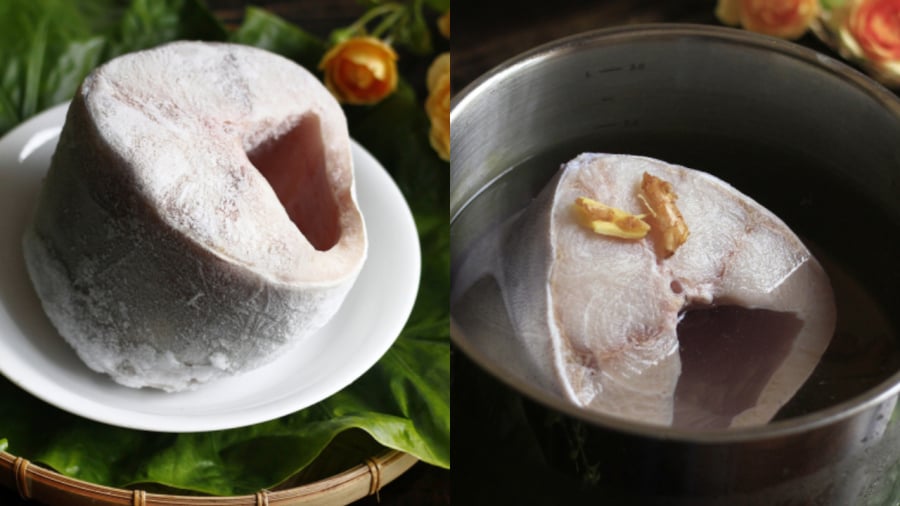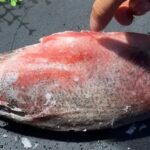Fish is a highly nutritious food, versatile in many delicious dishes, and is often stored in family refrigerators for convenient cooking. To maintain freshness, preserve nutrients, and prevent bacterial growth, fish is frozen at extremely low temperatures. When it’s time to cook, simply take it out of the freezer to thaw.
However, freezing fish at low temperatures can make the flesh hard and prolong the thawing process. The conventional method is to transfer the fish from the freezer to the chiller compartment half a day to a day before cooking, allowing it to defrost gradually. While safe, this method is time-consuming.
Impatient cooks may opt to soak the fish in a basin of water to speed up thawing. However, if not done properly, this method can result in slow defrosting and provide an opportunity for bacterial infiltration, leading to an unpleasant fishy odor and a bland, mushy texture.
For a quicker, more efficient thawing process, try using salt, ginger, lemon, or vinegar.

You can quickly defrost fish by soaking it in a solution of water, salt, ginger, and lemon/vinegar.
Prepare a basin of water, adding 2-3 teaspoons of salt, the juice of half a lemon (or 1-2 teaspoons of vinegar), and a small amount of crushed ginger. Stir the mixture until the salt and vinegar dissolve. Submerge the frozen fish in this solution, ensuring it is fully covered by the liquid. Depending on the size of the fish, it should thaw within 20-30 minutes, resulting in soft, intact flesh.
This method effectively eliminates any fishy odor, maintaining the freshness and natural flavor of the fish.
Once defrosted, rinse the fish and proceed with your chosen recipe.
It’s important to note that excessive amounts of lemon or vinegar can break down the protein structure, causing the fish to become mushy when cooked. Lemon imparts a pleasant aroma, effectively neutralizing any fishy odors, while vinegar serves a similar purpose but with a less appealing scent.
Avoid using hot water or microwaves for thawing, as they can partially cook the fish, making it difficult to prepare properly. Similarly, refreezing thawed fish is not recommended.
“Warning Signs: How to Spot Contaminated Fish”
“With growing concerns about toxic seafood, especially fish, it’s understandable that homemakers are cautious about selecting the freshest and safest produce for their families. We are here to share some tell-tale signs to look out for when buying fish, from observing their eyes to examining their gills and body, so you can rest assured that your chosen fish is of the highest quality and free from any toxins.”



































